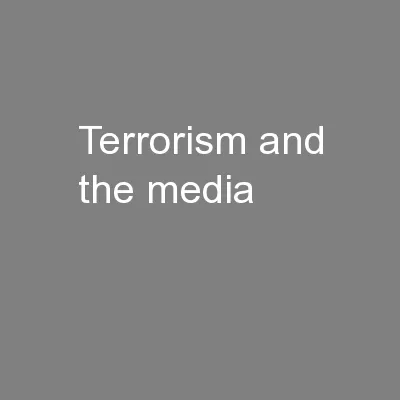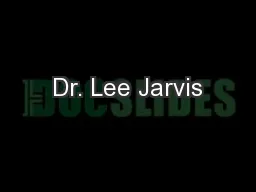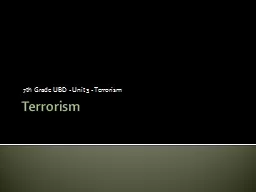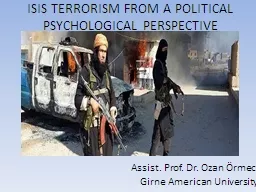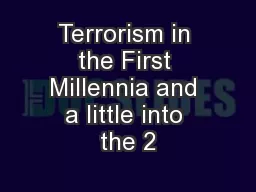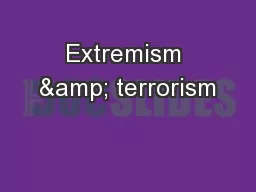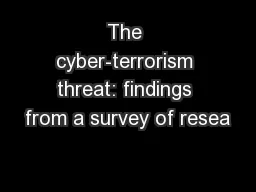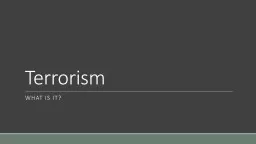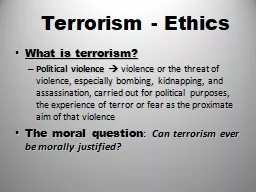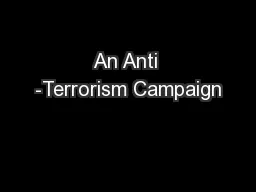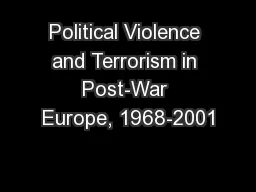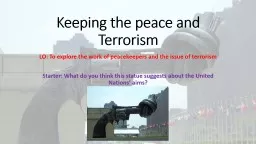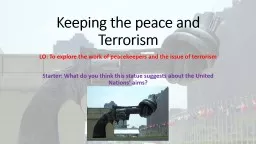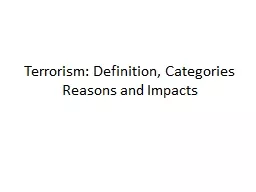PPT-Terrorism and the media
Author : jane-oiler | Published Date : 2016-07-27
First what is terrorism Terrorism can be seen as politicallymotivated violence or threat of violence with the intent of spreading fear The goal is more to generate
Presentation Embed Code
Download Presentation
Download Presentation The PPT/PDF document "Terrorism and the media" is the property of its rightful owner. Permission is granted to download and print the materials on this website for personal, non-commercial use only, and to display it on your personal computer provided you do not modify the materials and that you retain all copyright notices contained in the materials. By downloading content from our website, you accept the terms of this agreement.
Terrorism and the media: Transcript
Download Rules Of Document
"Terrorism and the media"The content belongs to its owner. You may download and print it for personal use, without modification, and keep all copyright notices. By downloading, you agree to these terms.
Related Documents

